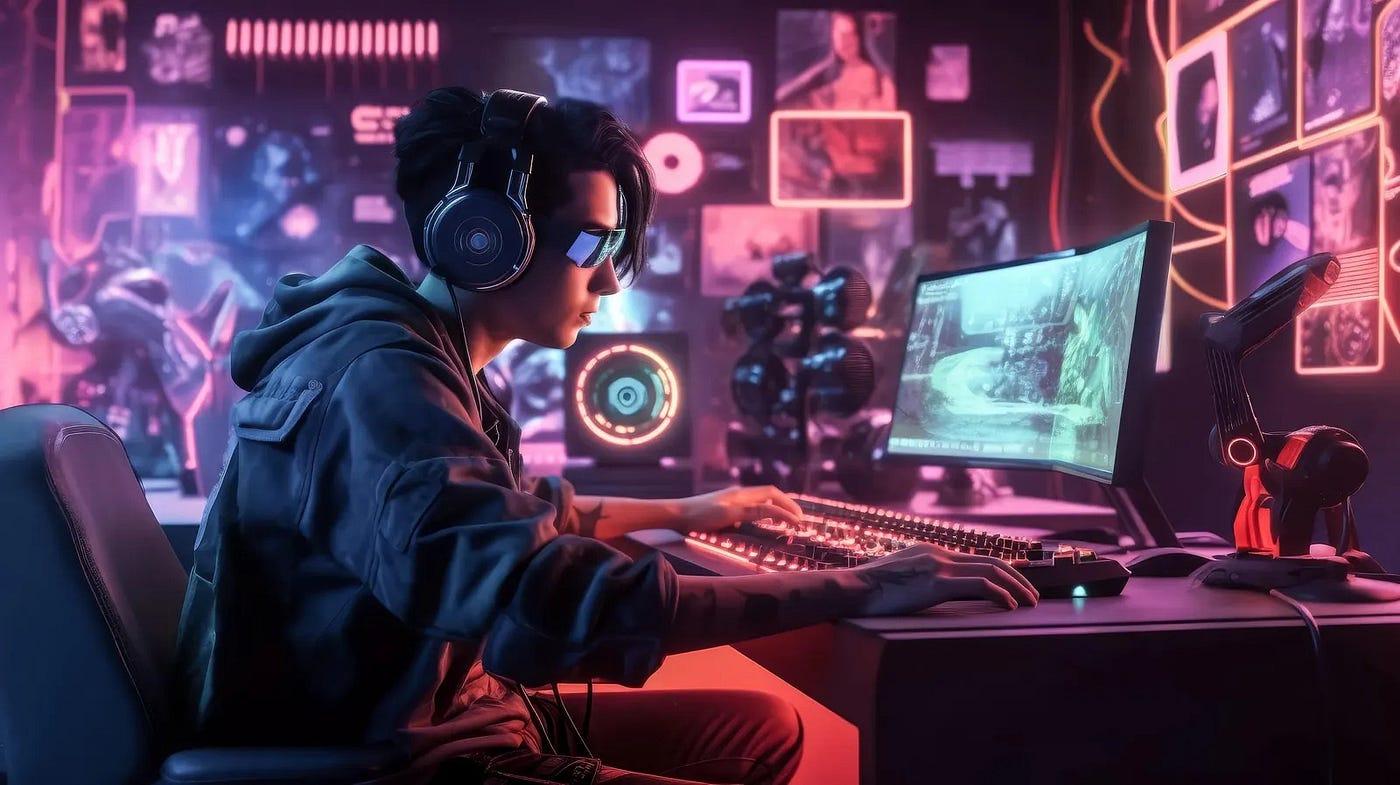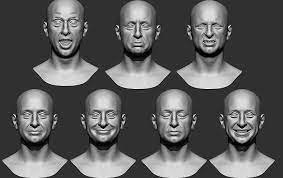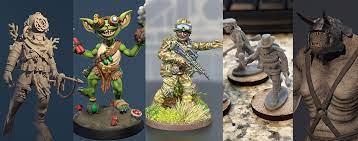Stylized or Realistic? How Players Choose Visual Identity in Sculpting-Based Games

In the world of gaming, art is more than decoration, it's the soul of the experience. Nowhere is this more evident than in the evolving genre of the 3D sculpture game, where visual identity isn’t just presented to players it's placed in their hands. These games empower players to mold, craft, and build their own visual worlds.
But as players pick up their digital chisels, one decision rises above all others: Should their creations be stylized or realistic? The answer is rarely simple, often personal, and always influential in defining the game’s tone, mechanics, and appeal. Let’s dive deep into how this choice shapes the player journey and why it matters more than ever in 2025’s design-first gaming culture.
Understanding Stylized Art in 3D Sculpture Games
Stylized art prioritizes form, exaggeration, and personality over photorealism. Think Pixar-like characters, vibrant voxel worlds, or even minimalist low-poly designs. This style speaks to the imagination, evoking charm, emotion, and accessibility.
In a 3D sculpture game context, stylized visuals give players creative freedom. Instead of sweating over hyper-accurate anatomy or realistic shadows, they focus on gesture, character, and storytelling. Tools in stylized sculpting games often emphasize brush play, proportion exaggeration, and artistic flair over technical precision.

Exploring Realism: When Detail Becomes the Canvas
On the other end of the spectrum lies realism. Photorealistic visuals aim to replicate life in high fidelity every wrinkle, muscle, or material is sculpted with precision. Games like ZBrush-based titles or Blender-integrated experiences lean into this, offering control over subsurface scattering, skin pores, and bone structure.
In a realistic 3D sculpture game, players become digital artisans. This approach attracts hobbyists, character modelers, and aspiring AAA artists who want to train their eye and perfect technique. It’s demanding, often slower, but incredibly rewarding for those chasing professional-level outcomes.
Why Style Choice Reflects Personality
Visual identity isn’t just an artistic decision it’s a psychological one. Stylized art often appeals to players who are playful, expressive, and story-driven. These users seek emotional storytelling or prefer a lighter aesthetic that doesn’t require technical perfection.
Conversely, realism attracts detail-oriented creators who thrive on accuracy and challenge. They often enjoy simulating life, capturing motion, or replicating real-world figures. The game becomes a digital workshop, where their discipline and patience are reflected in each sculpture.
So, when studios design a 3D sculpture game, they’re not just offering brushes they’re offering creative identity templates that align with distinct player mindsets.
Tools of the Trade: How Game Mechanics Support Style
Mechanics deeply influence the chosen visual path. Stylized sculpting games often provide simplified UIs, playful modifiers (like toon shaders), and whimsical animations. These mechanics encourage fast iteration and risk-taking.
Realistic sculpting engines, on the other hand, incorporate advanced mesh editing, multi-layered texturing, and physics-based rendering. Their controls are more complex, designed for fine-tuning and realism-centric workflows.
Game developers must consider this dichotomy carefully. A successful 3D sculpture game often includes toggles between stylized and realistic presets allowing users to start where they feel comfortable and grow into new styles over time.
How Peer Feedback Shapes Aesthetic Trends
Gamers don’t sculpt in isolation. Platforms with strong community features like asset sharing, live challenges, and critique boards often influence the popularity of one style over the other.
If a game’s weekly spotlight showcases highly stylized monsters or surreal environments, new users are likely to lean stylized. But if ultra-realistic busts or ZBrush-like character models dominate leaderboards, that realism becomes aspirational.
Community spotlighting becomes a subtle guide. Developers of 3D sculpture games can shape the artistic ecosystem simply by amplifying certain kinds of player expression.
Stylized vs. Realistic in Competitive and Educational Modes
Competition adds another layer. In timed sculpting duels or creative challenges, stylized art tends to dominate because it can be created quickly and with impact. Players aim to impress fast, making expressive silhouettes and bold colors effective.
In contrast, realism is often favored in educational modes or training-based gameplay. Aspiring artists treat these games as practice grounds, honing anatomy, materials, and light-based form.
A well-balanced 3D sculpture game will often offer both: fast-play stylized challenges and long-form realism workshops, catering to both hobbyists and professionals.

AI, VR, and the Future of Visual Identity
Technology is blurring the line between styles. AI-assisted tools in modern games can take a stylized draft and auto-suggest a realistic version or vice versa. VR sculpting adds immersion, allowing artists to "walk around" their creations and view proportions in real space.
Emerging tools like Leap Motion, haptic gloves, and gesture-based sculpting allow even beginners to experiment with advanced forms. This tech isn’t neutral; it actively shapes whether stylized or realistic workflows feel intuitive.
In 2025, expect more sculpting games that offer real-time style switching, AI-guided anatomy correction, and even style transfer features where a player can sculpt in realism, then instantly convert it to stylized formats for animation or sharing.
Monetization and Marketplace Influence
The monetization model also influences visual identity. In games where players can sell or trade their sculptures, realistic assets often fetch higher value especially for users exporting models to game engines like Unity or Unreal.
However, stylized models have their niche too especially in NFT-based ecosystems, where unique aesthetic appeal can drive virality and collectibility. Developers offering in-game marketplaces for a 3D sculpture game should consider multiple categories or art tiers to reflect style diversity.
Marketplaces also reflect demand: if realistic busts are selling more, new creators may shift their focus proving that economy and art style are increasingly interlinked.
Final Thoughts
The choice between stylized and realistic isn’t just an artistic one, it's a defining experience. A great 3D sculpture game doesn’t force players to pick one side. Instead, it celebrates the journey, letting creators explore, evolve, and experiment.
Today’s best sculpting-based games offer that flexibility, blending playful expression with professional-level detail. Whether you're sketching a surreal monster or rendering a lifelike portrait, the tools now meet you where you are. And just like how fans rush to redeem limited-edition Monster energy codes in games like Call of Duty for their favorite skins, players now seek meaningful choices that express who they are. Visual identity in sculpting games isn’t about perfection it’s about personality.
- Art
- Causes
- Crafts
- Dance
- Drinks
- Film
- Fitness
- Food
- Spiele
- Gardening
- Health
- Startseite
- Literature
- Music
- Networking
- Andere
- Party
- Religion
- Shopping
- Sports
- Theater
- Wellness


